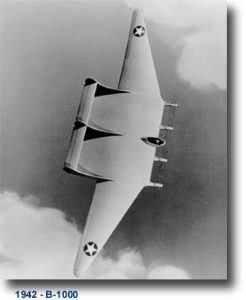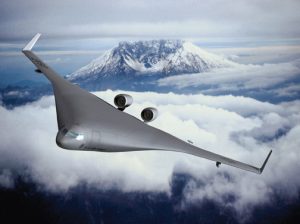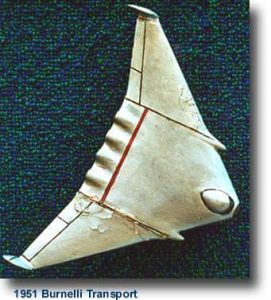Canada Car and Foundry Company Part 4: The Bomber That Could Have Been
In 1945, the Canada Car Foundry CBY-3 was almost a dead bird. The war was winding down and an excess of Douglas DC3s were being sold at $5,000 fire sale prices. Seeing the CBY-3 as good plane the national airline of Venezuela, Rutas Aereas Nacionales, purchased the only CBY-3 that was exported from Canada. Chalmers “Slick” Goodlin, who later went on to fame as the pilot who flew the first 26 missions of the X-1 before it broke the sound barrier with Chuck Yeager at the controls, was the pilot who flew the CBY-3 to Venezuela. The plane was pressed into service but within a couple of years required some maintenance that could not be done locally. The plane was sent to Connecticut for the work but, for some reason, was never returned to Venezuela. The plane was eventually shipped off to a aircraft museum near Hartford where it lies today in pieces and ignominy. A group in Montreal has tried to buy or even share the plane over the years but have been rebuffed by the Connecticut museum. Too bad.

But let’s go back a few years to 1942. In Part 3 of this series we discussed the Burnelli saga including Roosevelt’s refusal to authorize the purchase of any design made by Burnelli. That incident happened in 1939. To show what a grudge Roosevelt was capable of, in 1942 another bomber design competition was held, this time by the US Air Force. Canada Car & Foundry entered their B-1000 design which used Burnelli’s lift body design. The B-1000 passed all the tests, was the cheapest to build and could carry more load that all the other competitors – but – it was not selected. Why not? Your guess?
If your guess included Roosevelt, you are probably right.
Was the CC&F B-1000 aircraft a good design? You be the judge. Compare the B-1000 (1942) to the planned Boeing BWB (Blended Wing Bomber – 2005) design that is being studied at this very time. The US Air Force web site says this about the BWB:

“The blended-wing body concept is currently being studied as a research project that first began in the early 1990s. It’s less like a traditional aircraft and more like a flying wing, which offers a greater lift-to-drag ratio than traditional designs and is structurally simpler.”
Well maybe Boeing has it right. Design a plane with greater lift-to-drag ratio. Does that idea sound a little bit familiar? Burnelli designed it in the 1930s and the CC&F built it in the 1940s.
In all fairness the BWB bears an even more striking resemblance to a 1945 Burnelli design that was not part of CC&Fs inventory. although it was designed while Burnelli worked with the CC&F. In 1945, Burnelli received a patent for his Transporter. The image below is a model of the aircraft that was never built due to the political pressures placed on Burnelli.

So what ever happened to the Canada Car & Foundry?
In this series we have chronicled the rise of the CC&F from a small carriage maker to a very successful railway car maker to a successful war-time plane manufacturer.
After the war the CC&F returned to its roots as a rail car manufacturer. They also made a successful leap into the streetcar business, supplying Montreal, Toronto, Regina, Calgary and Vancouver, and the Brazilian cities of Rio de Janeiro and Sao Paulo.
In 1957, wishing to diversify, the British aircraft company – A.V. Roe Company, acquired CC&F. Through a series of further acquisitions and inevitable mergers and rationalisations, the CC&F disappeared into history and into the pages of Mysteries of Canada.
Note, If you are wondering what happened to Burnelli? He kept designing lift body aircraft until the day he died, penniless, in 1964. One of his last designs was called the BG888. But Burnelli’s spirit and his company lives on today in the current President of the Burnelli Company. Our own Chalmers “Slick” Goodlin.
For more on the Burnelli Controversy go to: www.aircrash.org.
Canada Car and Foundry Company Part 1 – Birth of a Giant
Canada Car and Foundry Company Part 2: Queen of the Hurricanes
Canada Car and Foundry Company Part 3 – The Airplane That Flew… But Did Not Take Off
This article is part 4
John Frazer
See also the recent Lock-Mart Hybrid wing-body that sticks a tail & rear ramp of a normal logistics plane onto the usual BWB design. With cutting-edge tech and engines and prop-fans, 70% efficiency savings over normal planes. They also say that with contemporary materials and engines it carries more, farther, onto shorter runways, with maybe “only” 27% savings. They found that waist trailing edge upper was the best place for the engines; for signature (noise, IR or radar from the ground, Also for complete freedom of engine use. A prop or propfan, or a jet could go there and no other changes to the plane are needed. The center fuselage was standard like a C-17, and unpressurized half-high payload went off to the sides in the wing fillet.
Same sorts of things Boeing people were saying about the 754 lifting body. Lock-Mart people have said they’re ready to build a better plane right now. Familiar tech and absolutely conventional but better handling. Note that the tail eliminates any concerns about stability or control-ability, like a Burnelli.
Modern high-end military planes will only ever after be lifting bodies. For stealth, of course, but the planes are able to perform their missions largely in part because they found the excuse to ditch the tubular fuselage in favor of lifting space/spanload, without saying they’re building a wing because it’s better.
I’ve seen articles that say stealthy planes benefit by less overall area per enclosed volume. Carefully saying it only in a context or observability, of course, not about inherent benefits to L/D, for instance.